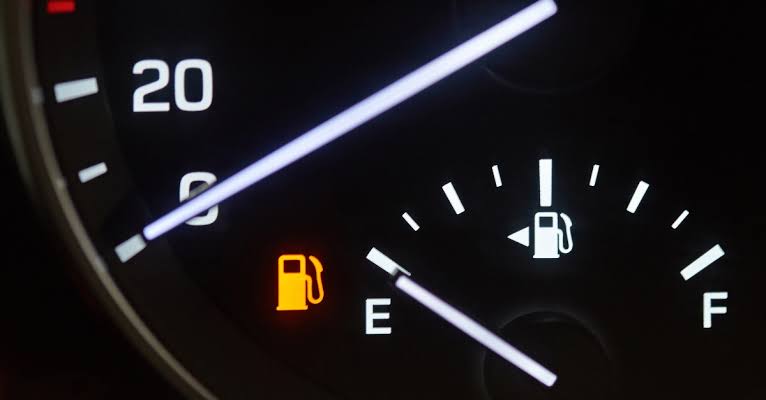Your car's drinking fuel like a freshly divorced dad at happy hour. According to the U.S. Department of Energy, underinflated tires alone can slash your fuel economy by 0.2% for every single PSI drop across all four tires.
That might sound minor until you calculate what you're actually spending at the pump.
When a customer rolls into my shop complaining about sudden fuel consumption spikes, I follow a systematic diagnostic approach. After many years of troubleshooting these issues, I've learned that certain components fail more frequently and dramatically impact fuel efficiency. Here's exactly what we check first.
Engine's Truth Serum
Every diagnostic session starts with plugging in our OBD-II scanner. Modern vehicles communicate through diagnostic trouble codes, and fuel efficiency issues almost always leave digital breadcrumbs.
I look specifically for these codes first:
- P0171/P0174 (System running too lean)
- P0172/P0175 (System running too rich)
- P0130-P0141 (Oxygen sensor circuit problems)
- P0101 (Mass airflow sensor performance)
"My check engine light isn't even on," customers often tell me. Wrong assumption. The engine control unit stores pending codes long before illuminating that dashboard warning. We're reading the engine's memory, not waiting for it to wave a flag.
The scanner also provides live data streams. I watch oxygen sensor voltage patterns, mass airflow readings, and fuel trim values while the engine runs. These numbers tell the real story behind fuel consumption changes.
Oxygen Sensors
Oxygen sensors control your engine's air-fuel mixture with surgical precision. When they fail, fuel consumption can increase by 20% or more overnight.
Here's how I test them:
I connect the scanner and observe live oxygen sensor data at idle. Healthy upstream sensors cycle rapidly between rich (0.8 - 0.9 volts) and lean (0.1 - 0.2 volts) readings, switching at least once per second. Failing sensors either get stuck at one voltage, respond sluggishly, or show erratic patterns.
Downstream sensors (after the catalytic converter) should remain relatively stable around 0.45 volts. If they mirror the upstream sensor's rapid switching, the catalytic converter is likely failing too.
"I know my engine," one customer insisted, "it's running fine." But his oxygen sensor was reporting false lean conditions, causing the engine control unit to dump excess fuel into the cylinders. His fuel bills had doubled in three weeks.
Mass Airflow Sensor
The mass airflow (MAF) sensor calculates exactly how much air enters your engine. The engine control unit uses this data to determine proper fuel delivery. When this sensor reads incorrectly, fuel consumption spirals.
I test MAF sensors using live data while revving the engine. At idle, readings should typically range from 3 - 7 grams per second depending on engine size. Under acceleration, these numbers should climb smoothly and proportionally to throttle input.
A contaminated MAF sensor often reads lower than actual airflow, causing the engine to run rich. Sometimes cleaning the sensor element with MAF, specific cleaner restores proper function. Other times, replacement becomes necessary.
The telltale sign? Customers describe their vehicle as "thirsty but powerful." The engine runs strong because it's getting extra fuel, but efficiency plummets.
Tire Pressure
Before sinking deeper into engine diagnostics, I always check tire pressures. This simple step reveals surprising efficiency killers.
Each PSI below recommended pressure increases rolling resistance. The math is straightforward: lose 10 PSI across all four tires, and you're looking at a 2% fuel economy hit. That translates to real money over time.
I use a quality digital gauge, not the ancient stick gauges at gas stations. Check pressures when tires are cold, driving even short distances affects readings. Don't rely on tire pressure monitoring systems either. They typically warn only when pressure drops 25% below recommended levels.
"My tires look fine," customers say. Visual inspection means nothing. A tire can appear properly inflated while being 15 PSI low. That's why we measure.
Fuel System Components
Clogged fuel injectors create uneven fuel distribution, forcing the engine control unit to compensate with richer mixtures. I perform fuel injector flow tests and cleaning services when diagnostic data suggests delivery problems.
Fuel filters rarely cause sudden efficiency drops unless completely blocked. More commonly, they contribute to gradual performance degradation. However, I replace them during major fuel system services to eliminate variables.
The fuel pump pressure test reveals whether adequate fuel reaches the injectors. Low pressure forces injectors to stay open longer, increasing consumption while reducing power output.
Ignition System
Worn spark plugs cause incomplete combustion, wasting fuel and reducing power. I examine plug condition during routine maintenance, looking for excessive wear, carbon buildup, or incorrect gap measurements.
Modern engines run leaner air - fuel mixtures than older designs, making proper ignition more critical. Marginal spark plugs that might have worked acceptably in older vehicles cause significant efficiency losses in current engines.
Ignition coils and plug wires get tested when spark plugs show unusual wear patterns or when diagnostic codes suggest ignition problems.
The Professional Advantage
These diagnostic procedures require professional equipment and experience. Generic code readers from auto parts stores provide basic information, but professional grade scan tools access manufacturer specific data streams and perform active tests.
More importantly, interpreting this data correctly separates successful diagnosis from expensive guesswork. Multiple components can create similar symptoms, and proper testing sequences prevent unnecessary parts replacement.
When fuel consumption suddenly increases, systematic diagnosis saves both time and money. We start with the most common causes, oxygen sensors, mass airflow sensors, and tire pressure before investigating deeper engine issues.
Don't ignore sudden fuel consumption changes. "It'll get better" thinking leads to expensive catalytic converter damage and months of wasted money at gas pumps. Address the problem early, and your wallet will thank you.
The diagnostic process takes skill, but the payoff is immediate. Customers regularly see 15 - 20% fuel economy improvements after addressing failed sensors or basic maintenance items. That's money back in your pocket every time you drive.

Comments (0)
Please login to join the discussion
Be the first to comment on this article!
Share your thoughts and start the discussion